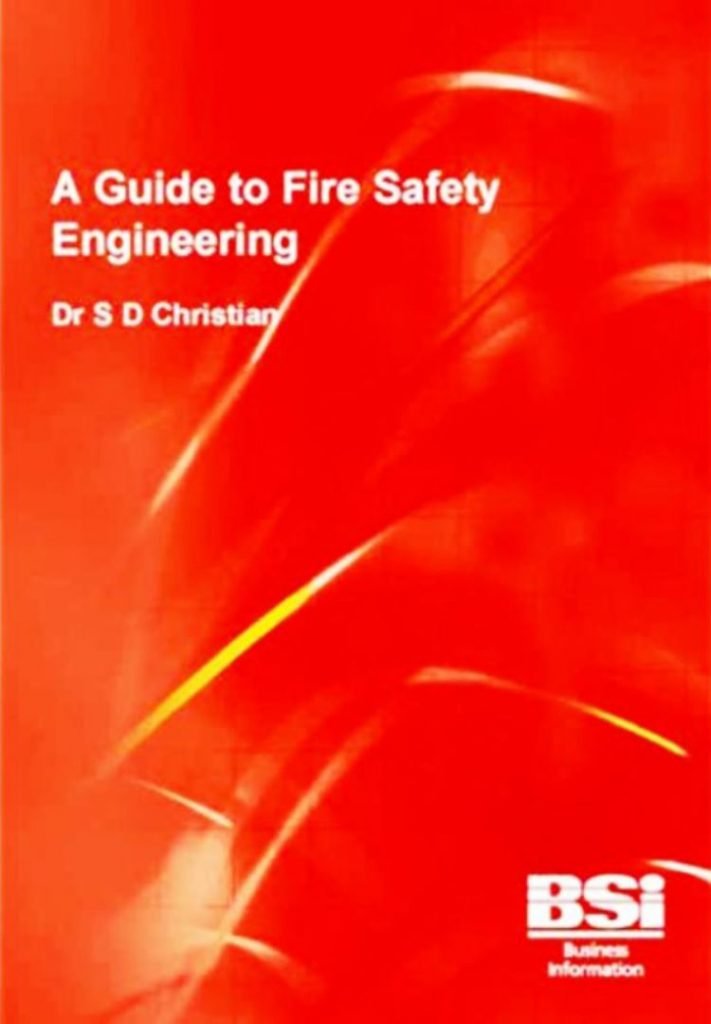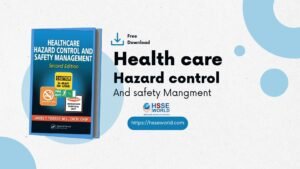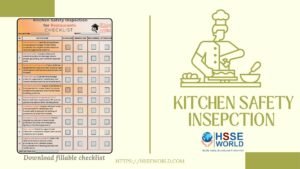E-Books: A Guide to Fire Safety Engineering
5 min readA Guide to Fire Safety Engineering by Don Christian British Standards Institution-BSI (2003). This document aims to provide an introduction and initial understanding of the principles of fire safety engineering and its relationship to fire precautions. It also suggests why such engineered solutions might be offered in achieving the objective of satisfactory safety levels in case of fire. This document does not aim to provide a detailed understanding of fire safety engineering. It is a basic guide for those who are new to the subject.
What are the fire precautions?
The term ‘fire precautions’ is generally accepted to include matters that are the subject of legal requirements under specific fire precautions legislation. These include The Building Regulations 2000, The Fire Precautions (Workplace) Regulations 1997 (as amended), and The Fire Precautions Act 1971 (as amended). In Northern Ireland, the Fire Services (Northern Ireland) Order 1984 (as amended) is in use. More generally, there exists health and safety legislation including the Health and Safety at Work, etc. Act 1974 and regulations made under that Act.
Fire precautions legislation deals with general fire precautions. These include:
- means of detection and giving warning in case of fire;
- provision of means of escape;
- means of fighting fire;
- training of staff in fire safety;
- linings that inhibit the spread of fire;
- means to provide structural stability; and
- means to resist the spread of fire within and between buildings.

The Fire Precautions (Workplace) Regulations 1997 also include a requirement for employers to undertake an assessment of the fire risks. The term ‘fire risk’ is generally accepted to collectively describe both the risk of a fire occurring and the risk to people in the event of a fire. The ‘risk assessment’ is an organized assessment of the work activities and associated hazards in the workplace that could cause harm to people. It is intended to assess whether adequate precautions to avoid or reduce the risk of harm have been taken or whether more action is necessary.
In this context, ‘hazard’ and ‘risk’ are defined in ISO/TR 13387-1 as follows.
- A ‘hazard’ is the potential for loss of life (or injury) and/or damage to property by fire.
- A ‘risk’ is the potential for realization of an unwanted event, which is a function of the hazard, its probability, and its consequences.

The present statutory duty imposed upon employers requires that the employer carry out a fire risk assessment of the workplace. Consideration must be given, amongst other things, to the needs of all employees and all other people who may be affected by a fire in the workplace. Adequate provision must also be made for any people with disabilities or with special needs who may use or be present on the premises.
The Fire Precautions (Workplace) Regulations 1997 require that the assessment is kept under review and is revised as necessary. The Regulations place a statutory duty on the employer, which will be related to the provisions of any fire safety engineered solution provided in his building.
Contents
Table of Contents of A Guide to Fire Safety Engineering
- 1. What are the fire precautions?
- 2. What is fire safety engineering?
- 3. Benefits of fire safety engineering
- Fire Alarm Systems A Reference Manual
- 4. Background
- 5. Using standard guidance – code-based solutions
- 6. Using fire safety engineering
- 7. Good questions for those dealing with a fire safety engineering design
- 8. Conclusion
- Health and Safety Pocket Book
- Terms and definitions
Download the book
More Downloads
- E-Books: Healthcare Hazard Control & Safety Management
- E-Books: Safety, Health and Working Conditions Training Manual
- E-Books: Energy Efficiency in Water and Wastewater Facilities
- E-Books: Fire Service Features of Buildings and Fire Protection Systems
- E-Books: Evaluation of Fire Safety free download
- E-Books: PPE for Chemical, Biological, and Radiological Hazards free
- E-Books: Changing the Workplace Safety Culture free download
- E-Books: Site Emergency Planning Workbook
- E-Books: Load Restraint Guide
- E-Books: Essential Practices for Creating, Strengthening, and Sustaining Process Safety Culture
- E-Books: System Safety Engineering and Risk Assessment
- E-Books: Permit-Required Confined Spaces
- E-Books: Is it Safe to Enter Confined Space?
- E-Books: 5-Minute Workplace Safety Talks
- E-Books: Safety Culture and High-Risk Environments
- E-Books: Practical Guide to Industrial Safety
- E-Books: Slip, Trip, and Fall Prevention for Healthcare Workers
- E-Books: Health and Safety at Work Key Terms
- E-Books: Fundamentals of Process Safety Engineering
- E-Books: Gas Detection Hand Book
- E-Books: Occupational health and safety management systems ANSI-AIHA-z10-2012
- E-Books: Hot Work on Drums and Tanks
- E-Books: Human Fatigue Risk Management
- E-Books: Guidelines for the provision of facilities and general safety in the construction industry
- E-Books: Handbook of Training in Mine Rescue and Recovery Operations ( 2021)
- E-Books: Code of Practice for the Safe Use of Lifting Equipment – Edition 9 (Nov 2019)
- E-Books: Free Forklift Health and Safety Best Practices Guideline
- E-Books: Handbook of Hazardous Chemical Properties
- E-Books: Human Performance Improvement through Human Error Prevention
- E-Books: Principles Of Fire Risk Assessment In Buildings
- E-Books: Investigation of Occupational Accidents and Diseases
- E-Books: Radiation Protection and Safety in Industrial Radiography
- E-Books: Basic Guide to System Safety, Third Edition
- E-Books: Food Safety Management-A Practical Guide for the Food Industry
- E-Books: Safety identification: Escape and evacuation plan signs- ISO 23601
- E-Books: Safety at Work
- E-Books: The Safety-Critical Systems Handbook 4th edition
- E-Books: Fundamental principles of occupational health and safety
- E-Books: Fire Safety Risk assessment Guide – Sleeping Accommodation
- E-Books: Mental health at work series
- E-Books: Live Fire Training: Principles and Practice
- E-Books: Pre-Startup Safety Review Guide
- E-Books: Fire and Emergency Drill Manual and Building Inspection Guide
- E-Books: Health and Safety: Risk Management 5th edition
- E-Books: Fire Protection systems -Third edition 2021
- E-Books: Fire Safety Logbook templates
- E-Books: From Accidents to Zero
- E-Books: Electric Safety Practice and Standards
- Your steps to chemical safety
- E-Books: Ergonomics and Psychology Developments in Theory and Practice
- E-Books: HAZOPS Should BE fun-The Stream-Based HAZOP
- E-Books: Safety Health and Environmental Auditing
- E-Books: A Quick Guide to Health and Safety
- E-Books: Occupational Ergonomics A Practical Approach
- E-Books: Job Hazard Analysis A Guide for Voluntary Compliance and Beyond
- E-Books: Electrical Safety of Low Voltage Systems



